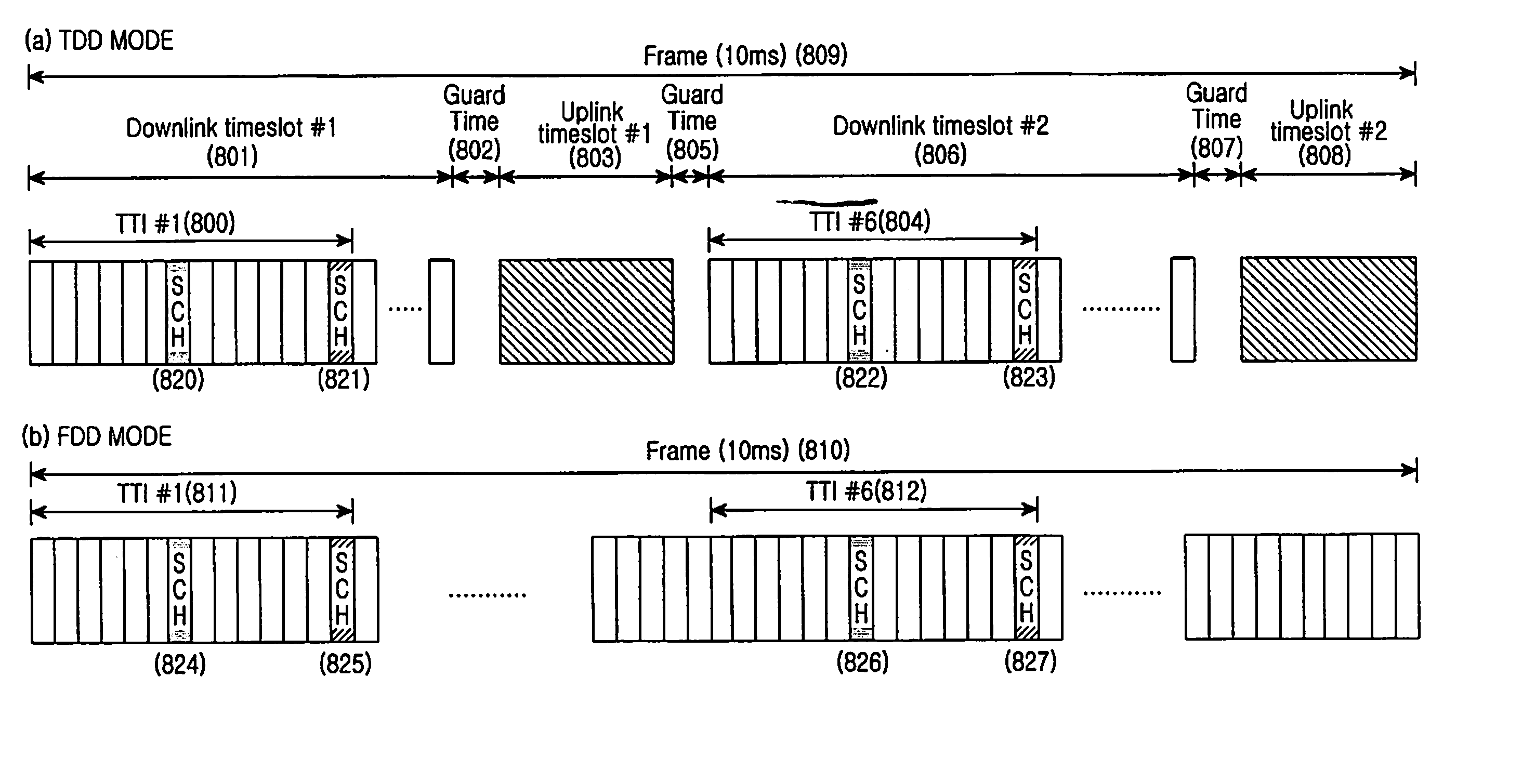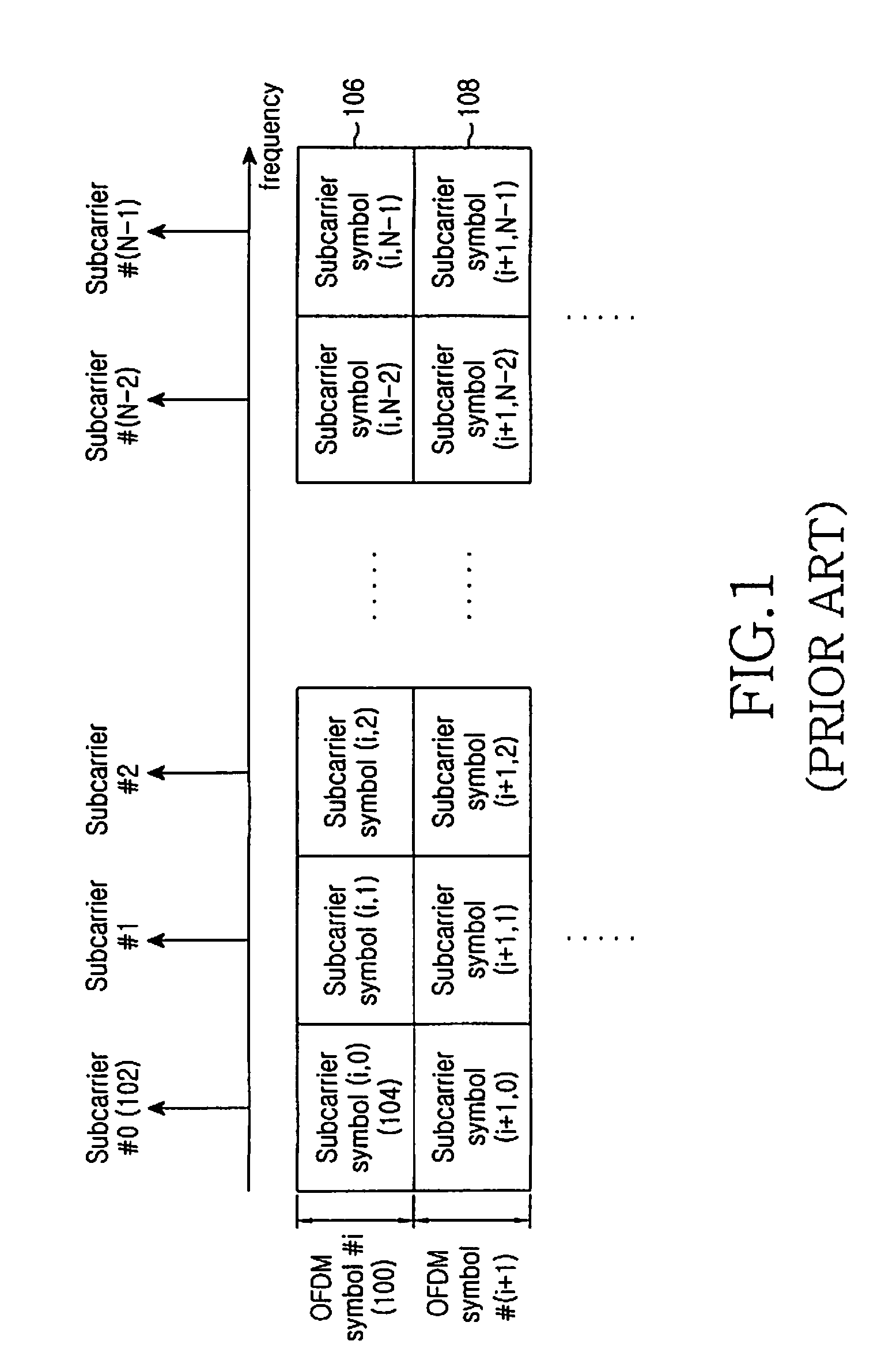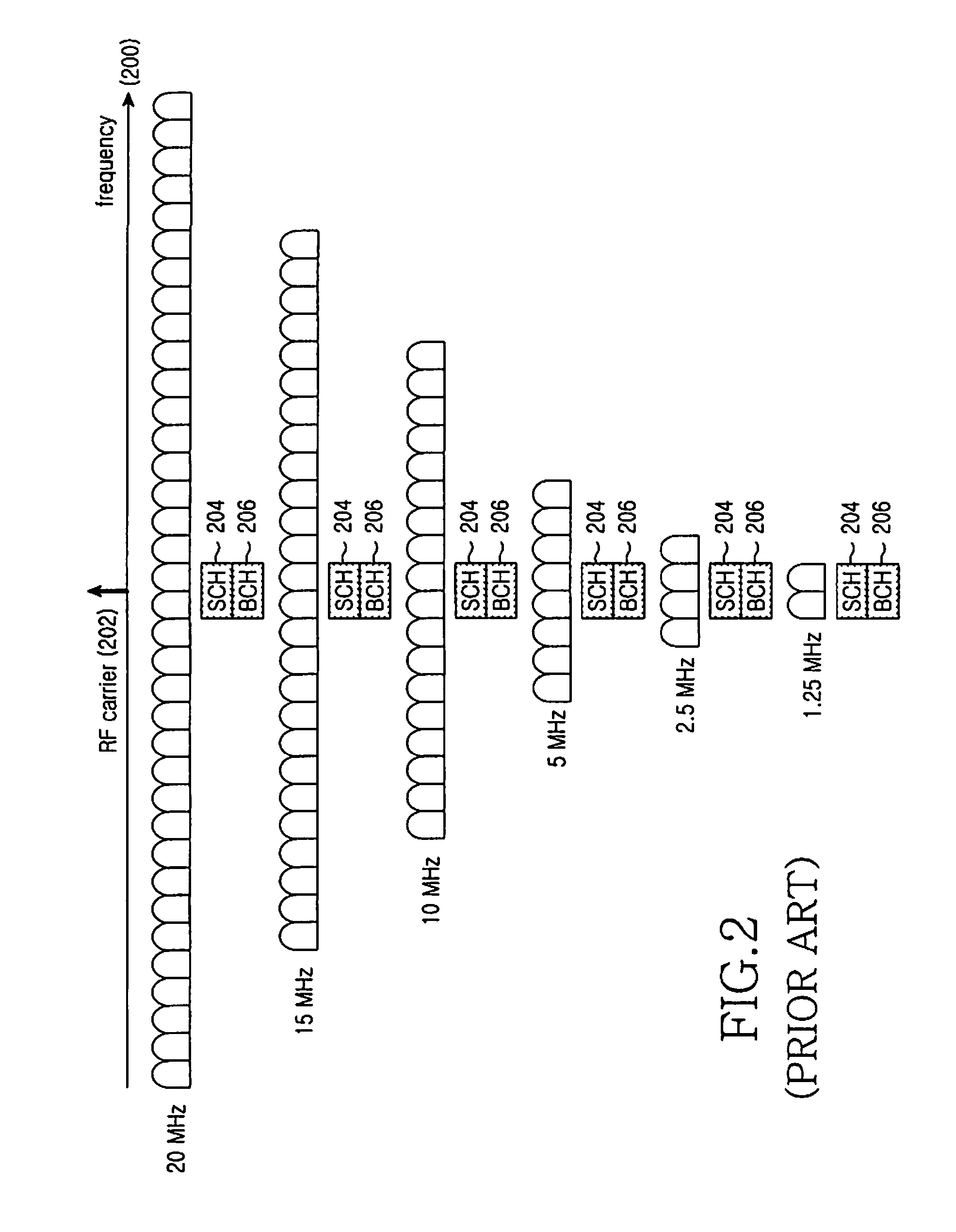Method and apparatus for transmitting/receiving downlink synchronization channels in a cellular communication system supporting scalable bandwidth
a cellular communication system and synchronization channel technology, applied in the field of cellular wireless communication system, can solve the problems of difficult to achieve seamless reception of mbms data and cell search, and the normal decoding of system information, and achieve the effect of scalability of system bandwidth
- Summary
- Abstract
- Description
- Claims
- Application Information
AI Technical Summary
Benefits of technology
Problems solved by technology
Method used
Image
Examples
1st embodiment
1st Embodiment
[0051]FIG. 6 illustrates an SCH according to the first embodiment of the present invention.
[0052] Referring to FIG. 6, in a central 1.25 MHz band 603 of the 20 MHz system band, the SCH is transmitted at the last OFDM symbols 605 and 608 of the Sub-Frame (SF) #1616 and the sub-frame #11618 within the 10 ms frame 615. Further, at the central 1.25 MHz bands 602 and 604 of the side 10 MHz bands 600 and 601, the SCH is transmitted at the last OFDM symbols 606 and 609 of the Sub-Frame #2617 and at the last OFDM symbols 607 and 610 of the sub-frame #12619. Therefore, in each of the 1.25 MHz bands 602, 603 and 604, two SCHs are transmitted within the 10 ms frame. The SCHs 605 to 610 as described above may be either the same sequence or different sequences. Even when the SCHs transmitted in the respective 1.25 MHz ands 602, 603 and 604 have specific sequence indexes different from each other, the sequences have the same structure so that a UE can detect a corresponding sequenc...
2nd embodiment
2nd Embodiment
[0070]FIG. 11 illustrates an SCH according to the second embodiment of the present invention. The structure shown in FIG. 11 is different from the structure of FIG. 6 in that each SCH is divided into a Primary SCH (P-SCH) and a Secondary SCH (S-SCH), both of which being transmitted twice in the frame. For example, the P-SCH may be primarily used for acquisition of downlink synchronization and the S-SCH may be primarily used for detection of a cell ID. However, the present invention does not limit the use of the P-SCH and the S-SCH.
[0071] Referring to FIG. 11, during TTI #11111 or TTI #61113, the P-SCHs 1105 and 1108 and the S-SCHs 1125 and 1128 are transmitted in the central 1.25 MHz band 1103 of the 20 MHz system band, while the P-SCHs 1107 and 1109 or 1106 and 1110 and the S-SCHs 1127 and 1129 or 1126 and 1130 are transmitted in the central 1.25 MHz band 1102 or 1104 of the side 10 MHz band 1100 or 1101. Further, the SCHs 1105, 1108, 1125 and 1128 of the central 1.2...
PUM
 Login to View More
Login to View More Abstract
Description
Claims
Application Information
 Login to View More
Login to View More - R&D
- Intellectual Property
- Life Sciences
- Materials
- Tech Scout
- Unparalleled Data Quality
- Higher Quality Content
- 60% Fewer Hallucinations
Browse by: Latest US Patents, China's latest patents, Technical Efficacy Thesaurus, Application Domain, Technology Topic, Popular Technical Reports.
© 2025 PatSnap. All rights reserved.Legal|Privacy policy|Modern Slavery Act Transparency Statement|Sitemap|About US| Contact US: help@patsnap.com



